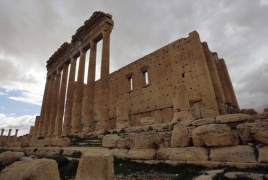
Islamic State insurgents stormed the historic Syrian city of Palmyra on Wednesday, May 20, fighting off pro-government forces who withdrew after evacuating most of the civilian population, state television said, according to Reuters.
The capture of Palmyra is the first time the al Qaeda offshoot has taken control of a city directly from the Syrian army and allied forces, which have already lost ground in the northwest and south to other insurgent groups in recent weeks.
The central city, also known as Tadmur, is built alongside the remains of a oasis civilization whose colonnaded streets, temple and theater have stood for 2,000 years.
Islamic State has destroyed antiquities and ancient monuments in neighboring Iraq and is being targeted by U.S.-led air strikes in both countries.
Syria's antiquities chief called on the world to save its ancient monuments and state television said Islamic State fighters were trying to enter the city's historical sites.
Palmyra is also a strategic military gain, home to modern army installations and situated on a desert highway linking the capital Damascus with Syria's eastern provinces, mostly under insurgent control.
The Syrian Observatory for Human Rights monitoring group said Islamic State had seized almost all of the city. It said it was unclear what had happened to forces stationed at an army outpost on its outskirts or the fate of a major military prison.
Syria's antiquities chief Maamoun Abdulkarim told Reuters earlier on Wednesday that hundreds of statues had been moved to safe locations but called on the Syrian army, opposition and international community to save the site.
"The fear is for the museum and the large monuments that cannot be moved," he said, "This is the entire world's battle."
UNESCO also called for international efforts to protect Palmyra's population "and safeguard the unique cultural heritage".
Palmyra's ancient monuments, which lie on the south-western fringe of the modern city, were put on UNESCO's World Heritage in danger list in 2013. The ruins were part of a desert oasis that was one of the most significant cultural centers of the ancient world.

